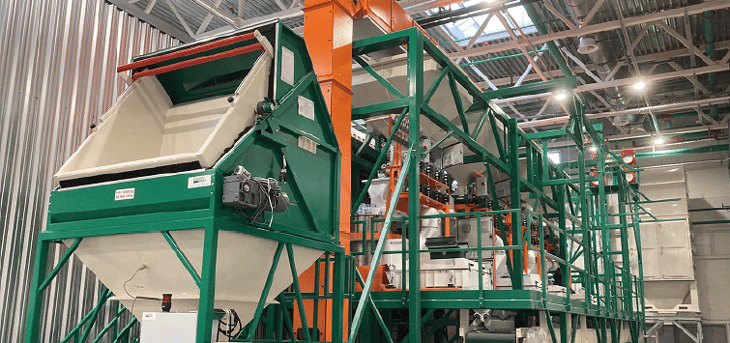
Seed Processing Holland B.V. (SPH) is a specialist in producing machines for seed processing companies. The company, based in Enkhuizen, the Netherlands, has been around for 55 years and contributes to the success of seed processing companies worldwide. They do this through the development, production and maintenance of efficient and innovative solutions. For this, the organisation has long relied on the 3D CAD software HiCAD in combination with the PDM system HELiOS from the ISD Group. Wouter van Ophem, R&D Engineer at SPH explains in what ways the organisation benefits from both systems in their processes.
From 2D to 3D software
In 1989, the organisation switched from drawing on paper to working out its machines in 2D CAD software. This already resulted in a considerable gain of time for the engineering and modification of projects. In 1997, SPH then switched from 2D to 3D CAD software. This step has only made it easier to engineer machines. Many challenges have been solved and productivity has increased. Wouter explains: "The arrival of 3D CAD software in 1997 has made it easier to design machines. Especially the sheet metal module of HiCAD has been a godsend, because this is very difficult to draw in 2D. If you compare the processes of today with the development of projects by hand, everything has become so much more productive. But also when you compare 2D CAD software with 3D software. If a small change was made in the 2D drawing, it was a lot of work to manually implement this in all the other drawings. In HiCAD this is all done automatically. When you change the 3D model, the software immediately changes the 2D working drawing and all other working drawings.
Integration with HELiOS
Besides HiCAD, Seed Processing Holland also uses our PDM system HELiOS, version 2021. The purpose of the link between HiCAD and HELiOS? To have a well-organised database that is also user-friendly. The initial situation for the implementation of HELiOS was that SPH was using a database based on DOS, i.e. an operating system for devices with disk drives. A challenge the company faced when introducing HELiOS was that all basic principles, such as how they wanted to use HELiOS, what information they wanted to put on item cards and the folder structure had to be redefined. "Fortunately, when HELiOS was introduced all the basic principles were discussed a number of times with ISD. HELiOS was also introduced into the company step-by-step", he says. According to Wouter, ISD provided positive support for the implementation, but it did not always run smoothly. He says: "Working with HELiOS is a great improvement, but at the time we saw some things differently from ISD. Working with HELiOS requires a different way of working. However, this way of working did not necessarily fit in with our process because we saw certain aspects differently. Despite the fact that we were not completely hindered by the change in working method, we did expect from ISD that HELiOS would fit in well with our existing process. In the end the way of working from HELiOS was partly transferred to us and a number of small customised changes were made, which solved the problem."
The function that Wouter really appreciates in HELiOS is the product explorer. "With this function all data can be found in one place, which works in a very clear and structured way. In addition, we can also easily make adjustments to each component. According to Wouter, this is also the great advantage of HELiOS. "The success of the PDM system in our organisation also results in a much better overview. As both systems are from ISD, HELiOS and HiCAD also work perfectly together.
The success that the PDM system has brought to our organisation also results in a much better overview. Since both systems are from ISD, HELiOS and HiCAD also work perfectly together".
Making every project a success
A recent project of SPH is a fully automated production line where the seeds are coated and dried. Wouter explains: ''The production line consists of a tipper into which crates of seeds can be put and which deposits the seeds in a silo, which in turn passes into a tray elevator. The tray elevator transports the seeds to one of the four silos of the machines that coat the seeds. Based on the filling quantity of the silo, the silo is selected so that there is always enough seed present at each machine. In the machine the seeds are coated. To coat the seeds the liquid has to be supplied. The transport of the coating to the machine is also designed by SPH. Immediately after coating, the seeds are dried so that they can be transported to a box. For the drying of the seeds, the air quality must be optimal. This entire installation (care and transport of the air) was designed by SPH. This installation is located abroad and had to be assembled at a time when the corona pandemic was at its peak and travelling abroad was not possible for the engineers. By directing the (local) mechanics from Enkhuizen and because HiCAD and HELiOS have been interwoven for such a long time, SPH has been accustomed to using these systems for years and projects have been optimised in this way, it was possible to successfully complete this project.
Cooperation with ISD
Wouter can be brief about the cooperation with ISD. "I am satisfied with the cooperation with ISD over the past few years. The helpdesk is good and they help you very quickly, which is very nice. The last update also went smoothly.




